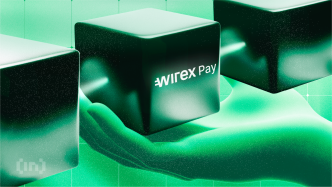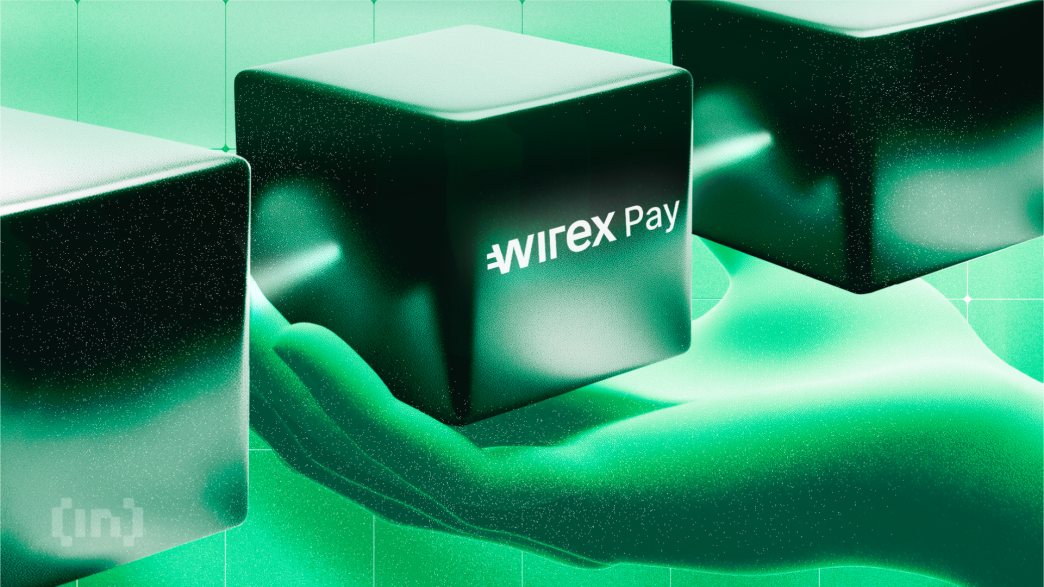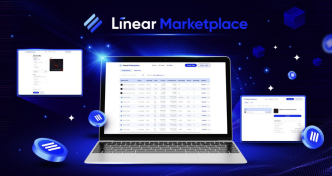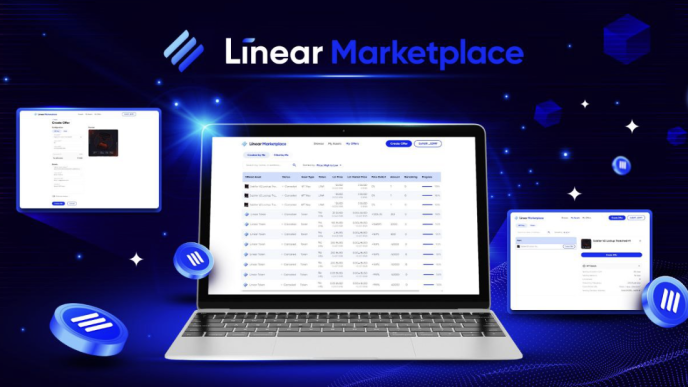Editorial Note: The following content does not reflect the views or opinions of BeInCrypto. It is provided for informational purposes only and should not be interpreted as financial advice. Please conduct your own research before making any investment decisions.
When it comes to bridging the gap between traditional finance and Web3, Wirex Pay plays a vital role by providing seamless, gasless, and on-chain payment solutions. This approach unveils an innovative structure for the future of finance by smartly utilizing blockchain technology.
What is Wirex Pay?
Wirex Pay is the world’s first Decentralized Payment Network (DPN), uniquely merging traditional and decentralized finance.
Wirex Pay is incubated by Wirex, a prominent UK-based award-winning digital payments platform with over 6 million customers in almost 130 countries. Allowing Wirex Pay to become a pioneering modular payment chain that is further powered by Polygon’s advanced Zero Knowledge (ZK) technology.
The Polygon ZK network is known for its unparalleled transaction efficiency and security. This gives Wirex Pay the ability to integrate traditional finance seamlessly with blockchain. Because of this, users can make instant and secure payments using a wide range of cryptocurrencies while also maintaining full control over their assets.
By utilizing Polygon’s super-efficient technology, Wirex Pay offers completely gasless transactions, ensuring there are no hidden fees. This gives users a straightforward on-chain payments network with full control!
Wirex Pay goes beyond just a payment network. It offers a new way of using and managing digital assets by focusing on user empowerment, security, trust, and decentralization. Regardless of who you are, the Wirex Pay tools are designed and developed to benefit everyone, whether you’re a casual user or a DeFi enthusiast.
Blockchain Nodes and How Do They Function?
One of the key features that make Blockchain technology unique and secure from other technologies is the use of Nodes.
Nodes operate as network stakeholders because the devices on which they operate have permission to keep track of the Ledger. The Ledger is the place where all the important information about the network is kept and is publicly available to anyone.
Therefore, the primary job of a blockchain node is to confirm the legality of every transaction recorded on the ledger. This helps ensure the network operates independently in the absence of a centralized authority. Since nodes are placed in a distributed network, there is no fear of a hack or a network downturn.
Without nodes, the blockchain network will simply not be able to run securely and smoothly.
Highlighting the significance of Wirex Pay’s approach, Pavel Matveev, Co-founder of Wirex, said:
“At Wirex Pay, our mission goes beyond just offering a payment platform; we’re pioneering a new era in financial technology. Our nodes are central to this vision, enhancing the efficiency and security of Wirex Pay and setting a new standard for what’s possible in the digital finance space. By making nodes a core part of our system, we’re not only leading the way in innovation but also delivering real, tangible benefits to our users and community.”
What are Wirex Pay Nodes?
Considering the importance of Nodes, Wirex Pay brings an innovative approach for its users which allows them to become active members of the network. By utilizing this approach, the Wirex Pay network remains entirely decentralized, with users having more control over its governance and infrastructure.
Wirex Pay offers Node sales, which are a way of distributing “special licenses” or “tickets” to its users who want to become part of its ever-expanding network and support decentralized finance. In fact, Node sales are not just tickets or licenses; they also offer countless rewards to the users, thus being extremely lucrative and attractive for the participants.
In return for Node sales, Wirex Pay can facilitate its much-needed early-stage fundraising, which is a win-win for both sides!
How does Wirex Pay Node Sale work?
The Wirex Pay node sale features 100,000 nodes organized in 40 tiers, with prices increasing as each tier fills.
The node sale is designed to ensure a fair and structured way for participants to join. A tier system reduces the barrier to entry and makes the system more democratic, as it welcomes people from varying economic backgrounds.
Furthermore, the pricing tier allows early supporters to receive better pricing. This structure ensures early participation and balanced demand.
Every node purchased is represented by a unique Node License NFT (ERC-721), which provides users with proof of ownership. Every purchased node is activated within 45 days of the post-Token Generation Event.
Features and Benefits of Wirex Pay Nodes
The key features and benefits of Wirex Pay Nodes include:
Decentralized Infrastructure and Governance
The purpose of the Nodes is to help distribute control and operation of the network to a wider community by giving more control to users, which strengthens the network’s security.
It also helps reduce reliance on a centralized entity and democratizes the decision-making process. In fact, Wirex Pay Nodes work similarly to a decentralized autonomous organization (DAO), as users have a dedicated platform on which to make important decisions.
Early Access and Fundraising
Users who purchase Wirex Pay nodes early on can participate in the network’s development and also have the opportunity to earn Wirex Pay rewards as the first.
This helps Wirex Pay ensure a sustainable way to raise funds to develop the platform and attract more users.
Network security and performance
The purpose of the nodes is to validate network transactions, maintain the blockchain ledger, and ensure the network’s security and performance; with Node sales, Wirex Pay can distribute nodes globally. This is because, as more nodes are distributed globally, the network becomes strong and less susceptible to cyber-attacks.
It also minimizes the risk of power ending up in the hands of whales or any other entity that can manipulate decision-making.
Benefits for Node owners
There are several benefits for users who want to become Wirex Pay node owners. These benefits include:
1. Earning Rewards
Node owners or operators receive 20% of the $WPAY token supply for five years and up to 40% of the transaction revenue. This gives users a continuous passive income stream and a stake in Wirex Pay’s success. The $WPAY token is an ERC-20 type token with a fixed supply of 10,000,000,000 tokens.
2. Governance rights
Users who own Nodes are given governance rights, which allow them to vote on network decisions that will help shape Wirex Pay’s future. This approach is vital for any project that aims to remain decentralized, as giving users a democratic voice guarantees the network evolves in line with their interests.
3. Ability to trade
As each node purchase is represented by a unique Node License NFT, users can trade or even sell them if they want to. This ensures that by purchasing a node, a user does not become bound for a lifetime but rather purchases something that offers flexibility and convenience.
This also helps to ensure that participation is accessible and attractive to a wide range of audiences, from individual users to even institutional investors.
4. Potential Perks and Rewards
In addition, Wirex Pay plans to announce potential perks and rewards for node owners in future phases. These perks and rewards will cover multiple areas, ensuring maximum returns, especially for the holders.
In Conclusion
Considering the growth in digital payments and utilizing cutting-edge blockchain technology, Wirex Pay has tapped into a world with endless possibilities. It also ensures its users have the ultimate say in matters related to the future development of Wirex Pay.
Therefore, it’s no wonder that the Wirex Pay Node Sale has generated over $20 million in total interest, with more than 11,000 wallets registered.
You can also invest in the future of digital payments by purchasing a Node or simply using Wirex Pay for daily transactions. This will yield the benefits of a payment solution that connects crypto with traditional finance.
If you want to learn more, you can head right to Wirex Pay’s Website or stay connected on X and Discord to hear the latest updates.
Disclaimer
This article is sponsored content and does not represent the views or opinions of BeInCrypto. While we adhere to the Trust Project guidelines for unbiased and transparent reporting, this content is created by a third party and is intended for promotional purposes. Readers are advised to verify information independently and consult with a professional before making decisions based on this sponsored content. Please note that our Terms and Conditions, Privacy Policy, and Disclaimers have been updated.
Source link
Dirk van Haaster
https://beincrypto.com/wirex-paygasless-payments-nodes/
2024-08-30 07:56:28









